| Pages:
1
2 |
David.B
Oud Junkie
    
Posts: 640
Registered: 9-5-2009
Location: France
Member Is Offline
Mood: Renaissance
|
|
"A treatise on Arabic music chiefly from a work by Mikhâil Meshâkah of Damascus"
By Eli Smith and Mikhâil Meshâkah.
http://www.jstor.org/pss/3217802
At last found it !
Does Anyone already get it to talk about before I buy ?
Also I'm still looking for the French translation by Ronzevalle...
|
|
|
fernandraynaud
Oud Junkie
    
Posts: 1865
Registered: 7-25-2009
Location: San Francisco, California
Member Is Offline
Mood: m'Oudy
|
|
comment on fait pour partager les frais? Tu fais la quete? Je voudrais bien le lire, ce petit chef d'oeuvre chauvin!
|
|
|
David.B
Oud Junkie
    
Posts: 640
Registered: 9-5-2009
Location: France
Member Is Offline
Mood: Renaissance
|
|
Salut Tony,
Je viens de t'envoyer un lien en u2u, à cause des droits je préfère ne pas afficher de lien sur le forum...
BTW, I'm so happy to have this treatise before my eyes 
This is a Masterpiece !
|
|
|
fernandraynaud
Oud Junkie
    
Posts: 1865
Registered: 7-25-2009
Location: San Francisco, California
Member Is Offline
Mood: m'Oudy
|
|
Je suis en voyage et je le telechargerais dans une semaine - merci!
|
|
|
ALAMI
Oud Junkie
    
Posts: 645
Registered: 12-14-2006
Location: Beirut
Member Is Offline
Mood: No Mood
|
|
Excellente trouvaille David !
Ce serait vraiment tres utile de commaitre tes impressions une fois que tu aurais avance dans la lecture.
Bonne chance pour la recherche de la version Francaise. Moi aussi je prefererais le Francais pour ce genre de lecture consistante.
|
|
|
Microber
Oud Junkie
    
Posts: 853
Registered: 1-20-2006
Location: Belgium - Liège
Member Is Offline
Mood: No Mood
|
|
Ah bon, le forum est devenu francophone.
Pourquoi pas, si tout le monde est d'accord...
Et moi aussi, je suis comme Alami, une version française m'intéresse.
N'hésitez pas à faire signe si ça bouge de ce côté.
|
|
|
David.B
Oud Junkie
    
Posts: 640
Registered: 9-5-2009
Location: France
Member Is Offline
Mood: Renaissance
|
|
OK guys, I write in English for everybody, although I prefer to read French... 
If you are interested by the book tell me via u2u. The "Journal of the American Oriental Society ©" seems to be a pretty big structure and I don't
want to bother Mike with copyright 
ALAMI, did you try Nidaa Abu Mrad, the Atonine University or L'Universite Saint Esprit - Kaslik (USEK) ? You are in the right place for this job !
Just tell us if you've got the time... I'll talk about my impression on the treatise here and I hope readers will do the same. I already have some
interesting comments about Marcus Scott Lloyd's work but I think I'll do it in a practical way through the analysis of "academic" takasim. Otherwise
the task will be insurmountable.
|
|
|
fernandraynaud
Oud Junkie
    
Posts: 1865
Registered: 7-25-2009
Location: San Francisco, California
Member Is Offline
Mood: m'Oudy
|
|
Reading this treatise on an iPhone's small screen is like working on a colonoscopy.
Or the proctologist's world-view.
|
|
|
adamgood
Oud Junkie
    
Posts: 499
Registered: 6-27-2005
Location: Brooklyn, NY
Member Is Offline
Mood: 2.7 koma flat
|
|
I tried to purchase this today for $8 but it didn't seem to work for me, two times. Has anyone managed to purchase a download from this site?
|
|
|
David.B
Oud Junkie
    
Posts: 640
Registered: 9-5-2009
Location: France
Member Is Offline
Mood: Renaissance
|
|
I had the same problem, try a cable, not wifi...
|
|
|
mrkmni
Oud Junkie
    
Posts: 393
Registered: 12-9-2007
Location: Ottawa/Canada
Member Is Offline
Mood: No Mood
|
|
Is there a copy in arabic plz?
|
|
|
David.B
Oud Junkie
    
Posts: 640
Registered: 9-5-2009
Location: France
Member Is Offline
Mood: Renaissance
|
|
Isis Fathallah reedited it in Arab in 1996.
|
|
|
David.B
Oud Junkie
    
Posts: 640
Registered: 9-5-2009
Location: France
Member Is Offline
Mood: Renaissance
|
|
Check out the nice rosette I've just found on Joseph Tawadros' Facebook !
I think this must be the original circle Eli Smith talked about when he wrote "This scale is usually drawn in Arab treatises in the form of a circle.
I have given it a shape better suited to occidental taste."
From the outside to the center from right to left : The number 1 to 48 ; the name of the notes Yekâh, Base to nîm-hisâr, Base to hisâr...
Remel-tûty ; the 14 intervals (does anyone know what is written here ?) of 4 and 3 quarters ; idem for the division of the circle into 4 equal parts,
I don't know what is written, the first division goes from Yegâh to Zergelâh, the second from Zergelâh to Nawa, the third from Nawa to Shahnâz and
the fourth from Shahnâz to Remel-tûty ; the center must be the name of the luthier.
I can't read Arab, tell me if I'm wrong !
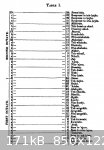
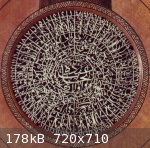
|
|
|
fernandraynaud
Oud Junkie
    
Posts: 1865
Registered: 7-25-2009
Location: San Francisco, California
Member Is Offline
Mood: m'Oudy
|
|
Is this shamsa one solid piece, or is it possibly assembled from smaller pieces?
|
|
|
fernandraynaud
Oud Junkie
    
Posts: 1865
Registered: 7-25-2009
Location: San Francisco, California
Member Is Offline
Mood: m'Oudy
|
|
DavidB, I am confused.
Who is the author of the French Essai Sur la Musique Ancienne et Moderne?
Where can I get the English Eli Smith work?
|
|
|
David.B
Oud Junkie
    
Posts: 640
Registered: 9-5-2009
Location: France
Member Is Offline
Mood: Renaissance
|
|
To me it seems to be one piece but I'm not a specialist...
|
|
|
David.B
Oud Junkie
    
Posts: 640
Registered: 9-5-2009
Location: France
Member Is Offline
Mood: Renaissance
|
|
Quote: Originally posted by fernandraynaud  | DavidB, I am confused.
Who is the author of the French Essai Sur la Musique Ancienne et Moderne?
Where can I get the English Eli Smith work?
|
The author of Essai Sur la Musique Ancienne et Moderne is Jean-Baptiste Laborde.
I sent a u2u for Eli Smith work, have you lost it ?
The shamsa brings me back on this discussion I had on Facebook :
http://www.facebook.com/photo.php?pid=388148&l=b41834a4ff&i...
I flew over the end of "A treatise on Arabic music chiefly from a work by Mikhâil Meshâkah of Damascus" and Eli Smith was aware that 24 notes scale
was not tempered...
|
|
|
David.B
Oud Junkie
    
Posts: 640
Registered: 9-5-2009
Location: France
Member Is Offline
Mood: Renaissance
|
|
I've just read pages 208-209 and I'm wondering about the oud described by Meshâkah (under Eli Smith's pen) : Does it correspond to the tuning I drew
?
At the top the nut (head), the bottom goes to the bridge. The green numbers represent the ascending, the red ones descending.
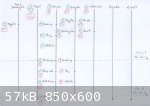
|
|
|
fernandraynaud
Oud Junkie
    
Posts: 1865
Registered: 7-25-2009
Location: San Francisco, California
Member Is Offline
Mood: m'Oudy
|
|
Why are your strings in that order? I think Smith's text is all mixed up.
I can't make any sense out of this, except one single way, and that's to think that if we read them from right to left, and convert the Arabic names
to Germanic letter notes, the strings would be tuned:
Nehuft E A D G C F
I don't know what the %$#@ Nehuft would be doing there, but if that was mislabeled and we call it a low C, "Base to Rast", that sequence
C E A D G C F
suddenly looks exactly like a contemporary 7 course oud, except that your drawing is mirrored, pitches rise to the left. Then all the notes you marked
are correct, though not necessarily in the right octaves.
If you draw a line across all strings at the level of Mahur on the Nawa string, that's the 5th fret, so at that level you can write on each string the
name of the one to the left of it, and then it looks OK. The Rast string is really the Mahur string, and the one labeled Base to Jehargah is actually
Response to Jehargah, or high F. The two rightmost courses are the drone courses, here tuned C then E (how I tune anyway), then the melody courses A D
G C and a high F "mumtaz" course.
Is that how you interpret it?
|
|
|
David.B
Oud Junkie
    
Posts: 640
Registered: 9-5-2009
Location: France
Member Is Offline
Mood: Renaissance
|
|
When I first read :
"1. Among the stringed instruments, is the `ûd. It has seven strings, each of which is double, to increase the strength of the sound ; only four
of the seven, however, are much used. The first string on the left of the `ûd, is tuned to the base to jehârgâh ; the second is tuned to rest ; the
third to nawa ; the fourth to dûgâh ; the fifth to `ösheirân ; the sixth to bûselîk ; and the seventh to nehuft. Thus each string is fourteen
quarters [My MS says ten quarters, which is evidently a mistake. - E.S.] above the string on its right, or the base of that string ; and the interval
between the pairs of strings is of three tones or not, accoding to the occurrence of the greater or smaller interval."
If said to myself : "There's a mistake"
The strings from left to right should be base jehârgâh, rest, nawa, muhaiyar, response to huseiny, response to
huseiny-shed, response to the response to nehuft if we follow the progression of fourteen quarters, even if I don't understand "or the base
of that string".
Then I read :
"Moreover there is a mark made across the lower part of the neck of the `ûd, under the strings, at the distance of one third from the head to the
bridge. Its use is, that if you press upon any string over this mark, and then strike the string, the sound may be the same with that of the entire
string next above, or with the response to that string. For if you take two thirds of the string of a musical instrument and strike it, the sound will
be about fourteen quarters higher than the sound from the whole ; and from the half, the sound will be the response to the sound from the whole. E. g.
if the length of a string consists of 3,456 parts, then will the half, viz. 1,728 ge the length occupied by the first octave, and 1,148 the length
occupied by the fifth, which is about a third of the whole, being only 1/288th less than a third. The following table shows the length occupied by
every interval, and every quarter, of the first octave. For the second octave, the distances will be half as great ; for the third, a fourth as great,
&c. The proof of the whole will be evident to one who is achainted with the principles of geometry." -> The reason why I draw the 1/3 of
the string (and 1/2).
And the last part sounded like such a mess that I needed to draw it to be sure of what I was reading :
"The four strings most used are rest, nawa, dûgâh, and `ösheirân. The other notes are obtained by pressing upon these strings with the ends of
the fingers of the left hand. The manner of ascending and descending the octaves, is the following. Yegâh is taken from the base to jehârgâh by
pressing upon it with the fore finger. `Ösheinrân is taken from the fifth string entire. `Arâk from the same string with the fore finger. Test from
the same also, with the ring finger ; or sometimes from the second string entire. Dûgâh from the fourth string entire. Sîgâh from the same with
the fore finger. Jehârgâh from the same also, with the ring finger. Nawa from the third string entire. Huseiny from the same with the fore finger ;
also Auj with the ring finger ; and mâhûr with the little finger. For muhaiyar press upon the same third string with the fore finger at the point
where the mark is drawn on the neck of the instrument : then for buzrek press upon it with the middle finger ; for mâhûrân with the ring finger :
and for remel-tûty with the little finger. In descending proceed in a reversed order note by note to muhaiyar. Then, from the fourth string,
reckoning from the mark toward the bridge, take mâhûr by pressing with the ring finger ; auj with the middle finger : and huseiny with the fore
finger, [i. e. over the mark.] After which, take nawa from the third string entire, and then, returning to the fourth, complete the descent by
reversing the order of the ascent.
When a quarter is wished instead of a regular note, in the circumstances described in the third paragraph of Chap. I. § 5, it is obtained by moving
the finger up or down, as the case may be, on the string from which it is to be taken."
So if my draw corresponds to what E.S. had written, I guess he didn't understand Meshâkah. Also my purpose is not to interpret, I would prefer to
check out Ronzevalle translation or better, the Arab original one to know the tuning used in 1847.
BTW, you interpretation is interesting Tony. I thought about that too but as you said E.S.'s text is all mixed up and it's really too unfocused to
give a clear answer.
At last, I just wanted to be curious and know the tuning in order to have a better understanding of the 95 melodies.
|
|
|
David.B
Oud Junkie
    
Posts: 640
Registered: 9-5-2009
Location: France
Member Is Offline
Mood: Renaissance
|
|
From http://www.mikeouds.com/messageboard/viewthread.php?tid=7795
I guess the original one...
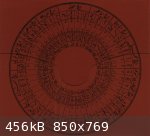
|
|
|
David.B
Oud Junkie
    
Posts: 640
Registered: 9-5-2009
Location: France
Member Is Offline
Mood: Renaissance
|
|
http://www.facebook.com/photo.php?pid=1166706&l=d21ac60079&...
EDIT
I've just understood why there's a repetition: In fact the circle must be cut right in the middle between the numbers. Thus you can move the little
circle into the big ring. For example you want to play maqam Rast on Nava, you just have to turn the circle and make correspond the note Rast to Nava
then you compare the notes for maqam Rast into the circle with the notes into the ring: Rast in front of Nava, Dogah in front of Hossaini, Sigah in
front of Owj, etc. Eli Smith didn't understand the use of such a circle, that's why he wrote such a complicate (when you try to transpose) table!
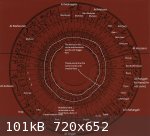
|
|
|
David.B
Oud Junkie
    
Posts: 640
Registered: 9-5-2009
Location: France
Member Is Offline
Mood: Renaissance
|
|
What the circle shows.

|
|
|
David.B
Oud Junkie
    
Posts: 640
Registered: 9-5-2009
Location: France
Member Is Offline
Mood: Renaissance
|
|
"The idea of a three-octave ambitus is also found in a number of diagrammatic presentations of the Arab scale that were apparently a common feature in
theoretical works at the beginning of the modern period. These diagrams usually consisted of a two concentric circles, divided by as many spokes as
there are notes in Arab music. The note names are written, one per spoke, in ascending order near the circumference of each of the two concentric
circles. These diagrams served two purposes. Besides presenting the note names, these diagrams are representations of three-dimensional devices
constructed to illustrate the process of modal transposition. In the tree-dimensional versions, the two concentric circles could rotate around the
central point independently. When one wanted to know the notes used in a specific transposition of a given mode, one would find the origin tonic note
on the outer of the concentric circles and then turn the two circles until the original tonic note was exactly aligned with the new desired tonic
note. Having done this, one would locate the notes of the desired maqam in its root position on the outer circle. These notes would then be exactly
aligned with the notes on the inner circle which were needed for the maqam in its new transposition."
ARAB MUSIC THEORY IN THE MODERN PERIOD p108
|
|
|
David.B
Oud Junkie
    
Posts: 640
Registered: 9-5-2009
Location: France
Member Is Offline
Mood: Renaissance
|
|
"Un traité de musique Arabe moderne"
Préface, traduction française, texte et notes. - P.L. Ronzevalle.
+ the original text in Arabic.
-> http://www.mikeouds.com/messageboard/viewthread.php?tid=12558#pid85...
|
|
|
| Pages:
1
2 |